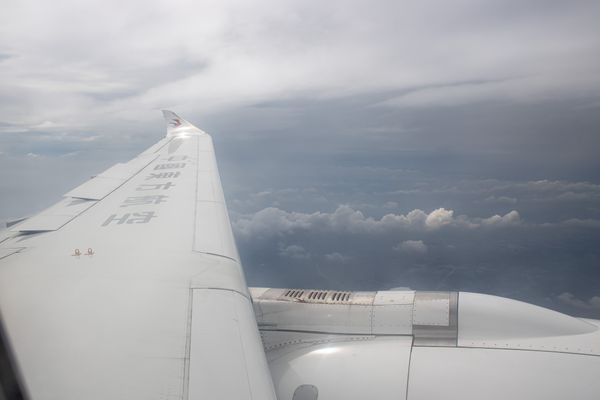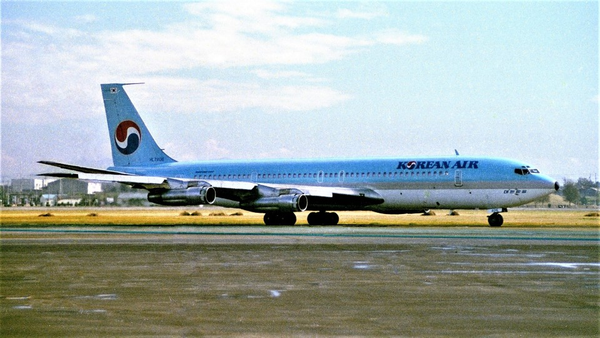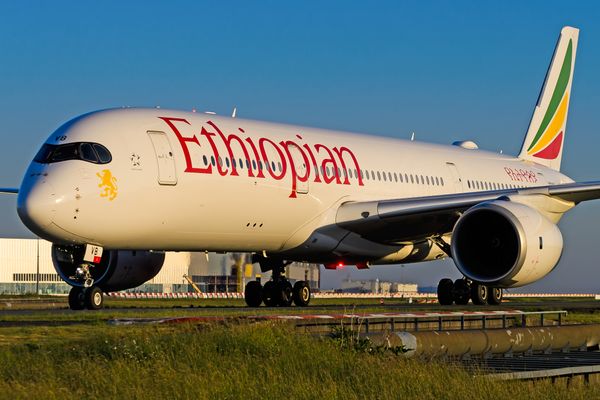On Sunday, September 4, 2022, a Cessna Citation 551, registered OE-FGR crashed into the Baltic Sea under mysterious circumstances. The private jet was carrying four individuals from Jerez Airport (XRY/LEJR) in Spain to Cologne Bonn Airport (CGN/EDDK) in Germany. At approximately 14:56 local time (12:56 UTC) the aircraft took off from runway 20 at Jerez and proceeded to climb on its filed route as normal.

The Problems Begin
Shortly after takeoff, the crew reported to Spanish Air Traffic Control that there was a problem with cabin pressure. Shortly before the Citation jet entered French airspace, contact with the aircraft was lost. French and Spanish fighter jets were scrambled to intercept the 551 jet to see why it was not responding to calls from Air Traffic Control. None of the fighter jet pilots were able to see anyone inside the cockpit.

Mid-Flight
French fighter jets escorted the Citation until it entered German airspace. It was evident that the aircraft was on autopilot the entire time, as when the jet neared its destination of Cologne, it did not descend. Rather, it continued flying straight over the airport at its cruising altitude of 36,000 feet. German fighter jets escorted the "ghost" plane until it entered Danish airspace. The final fighter jets, F-16s from the Royal Danish Air Force (RDAF) would escort the now doomed aircraft and observe the jet until it began to spin out of control and crash just outside of Latvian airspace.
The Crash
At 17:30 UTC the Cessna Citation 551, which had been presumably flying on autopilot since the aircraft lost contact with ATC, began losing speed and altitude. It was around this time that the aircraft most likely ran out of fuel. About 14 minutes later, at 17:44 UTC, the plane disappeared off the radar and crashed into the sea 15 kilometers off the Latvian coast. Its last position indicated that the aircraft was at 2100 feet and spiraling at -8000 feet per minute.

Aftermath
After the crash, the Swedish Coast Guard was deployed to the area of the crash site. Wreckage and oil stains were found floating in the water. The "chance of finding survivors is minimal" said Lars Antonsson from the Maritime and Air Rescue Centre. A passenger ship belonging to Stena Line, M.F. Urd, which was en route to Sweden when the crash occurred, diverted to the site to help with search and rescue operations.

Approximately 12 hours after the crash, the identities of those onboard were revealed. The pilot of the Citation 551 Jet was 72-year-old German entrepreneur Peter Griesemann. He was flying with his 68-year-old wife, Juliane, along with his 26-year-old daughter and 27-year-old male friend.
Possible Causes
There most likely cause at this time seems to be the depressurization of the aircraft, as the crew of the Citation jet reported having pressurization problems after takeoff. At an altitude of 36,000 feet, just a few minutes of de-pressurization at such high altitudes can cause dizziness, and fainting due to the lack of oxygen and cabin pressure. Only the official investigation will reveal exactly what caused the crash of this jet.
GTF Storage Crisis Deepens: 835 Aircraft Grounded as Pratt & Whitney Recalls Surge Post-Mid-Year » VIDEO: What It's Like Onboard China's COMAC C919 » KAL858: The North Korean Bombing that Shocked the World »
Comments (0)
Add Your Comment
SHARE
TAGS
NEWS Breaking News Cessna Citation Plane Crash Crash Europe Austria MysteryRECENTLY PUBLISHED
 VIDEO: What It's Like Onboard China's COMAC C919
We flew onboard China Eastern's COMAC C919 to experience China's homegrown narrow-body up close. From seat comfort to cabin layout to noise levels to tech: how does it really compare with the Boeing 737 and Airbus A320? This review puts all three workhorses under the same spotlight.
TRIP REPORTS
READ MORE »
VIDEO: What It's Like Onboard China's COMAC C919
We flew onboard China Eastern's COMAC C919 to experience China's homegrown narrow-body up close. From seat comfort to cabin layout to noise levels to tech: how does it really compare with the Boeing 737 and Airbus A320? This review puts all three workhorses under the same spotlight.
TRIP REPORTS
READ MORE »
 KAL858: The North Korean Bombing that Shocked the World
Among the 99 passengers boarding Korean Air Flight 858 on November 29, 1987, few could imagine their journey would end as one of aviation's darkest mysteries.
STORIES
READ MORE »
KAL858: The North Korean Bombing that Shocked the World
Among the 99 passengers boarding Korean Air Flight 858 on November 29, 1987, few could imagine their journey would end as one of aviation's darkest mysteries.
STORIES
READ MORE »
 Ghost Networks: The Rise, Fall, and Revival of Fifth-Freedom Flights
Fifth-freedom flights — routes where an airline flies between two countries outside its home base — have always lived in aviation's twilight zone. We chart their rise, their near-disappearance, and the surprising markets where they still thrive today. Then we take you on board a special Seoul-Tokyo fifth-freedom flight to show how the experience stacks up against a typical regional carrier.
TRIP REPORTS
READ MORE »
Ghost Networks: The Rise, Fall, and Revival of Fifth-Freedom Flights
Fifth-freedom flights — routes where an airline flies between two countries outside its home base — have always lived in aviation's twilight zone. We chart their rise, their near-disappearance, and the surprising markets where they still thrive today. Then we take you on board a special Seoul-Tokyo fifth-freedom flight to show how the experience stacks up against a typical regional carrier.
TRIP REPORTS
READ MORE »



